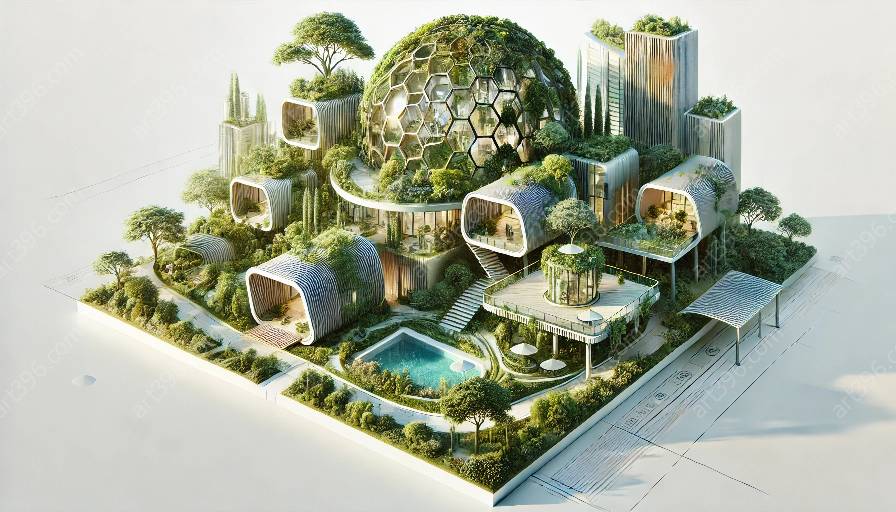The relationship between community well-being and sustainable architecture is a vital consideration in the development of modern cities and communities. Sustainable architecture, often referred to as green architecture, focuses on creating environmentally responsible and resource-efficient structures and design techniques. The concept of community well-being centers around promoting the health and welfare of individuals within a community and fostering a sense of connection, inclusion, and harmony. This topic cluster aims to explore the ways in which sustainable architecture contributes to the enhancement of community well-being.
Understanding Sustainable Architecture
Sustainable or green architecture is a design and construction approach that seeks to minimize the environmental impact of buildings while creating healthy, productive, and uplifting spaces for people. This is achieved by integrating innovative design strategies, energy-efficient technologies, and the use of sustainable materials into the built environment. The principles of sustainable architecture emphasize reducing energy consumption, minimizing waste, conserving natural resources, and optimizing the overall environmental performance of buildings.
Creating Healthy and Inclusive Spaces
One of the key ways in which sustainable architecture contributes to community well-being is by creating healthy and inclusive spaces that support the physical and mental health of inhabitants. Green buildings often incorporate features such as natural daylighting, improved indoor air quality, and access to outdoor green spaces. These elements can have a positive impact on the well-being of individuals living or working within these environments, leading to increased productivity, enhanced comfort, and better overall health.
Promoting Social Interaction and Connection
Sustainable architecture also plays a role in promoting social interaction and connection within communities. By designing buildings and urban spaces that encourage interaction, collaboration, and a sense of community, architects can contribute to the development of strong social networks and a greater sense of belonging among residents. Features such as communal outdoor areas, pedestrian-friendly designs, and mixed-use developments can foster a sense of connectedness and support social well-being.
Supporting Environmental Sustainability
Furthermore, sustainable architecture directly aligns with the goal of environmental sustainability, which is crucial for the well-being of both current and future generations. Green buildings are designed to minimize their carbon footprint, reduce water consumption, and utilize renewable energy sources, all of which contribute to mitigating climate change and preserving the natural environment. By prioritizing environmental sustainability, sustainable architecture safeguards the well-being of communities by creating a healthier and more livable planet for all.
Improving Resilience and Adaptability
In the face of climate change and other societal challenges, sustainable architecture offers solutions that improve the resilience and adaptability of communities. Buildings designed with sustainable principles can better withstand environmental hazards, such as extreme weather events, and offer efficient, cost-effective solutions for mitigating the impacts of climate change. This resilience directly contributes to the well-being of communities by providing safer, more stable living and working environments.
Conclusion
Community well-being and sustainable architecture are intrinsically connected, with green architecture playing a significant role in enhancing the health, social cohesion, and environmental sustainability of communities. By prioritizing the principles of sustainable design, architects and urban planners can create spaces that not only reduce negative environmental impacts but also contribute to the holistic well-being of individuals and the larger community.





























































